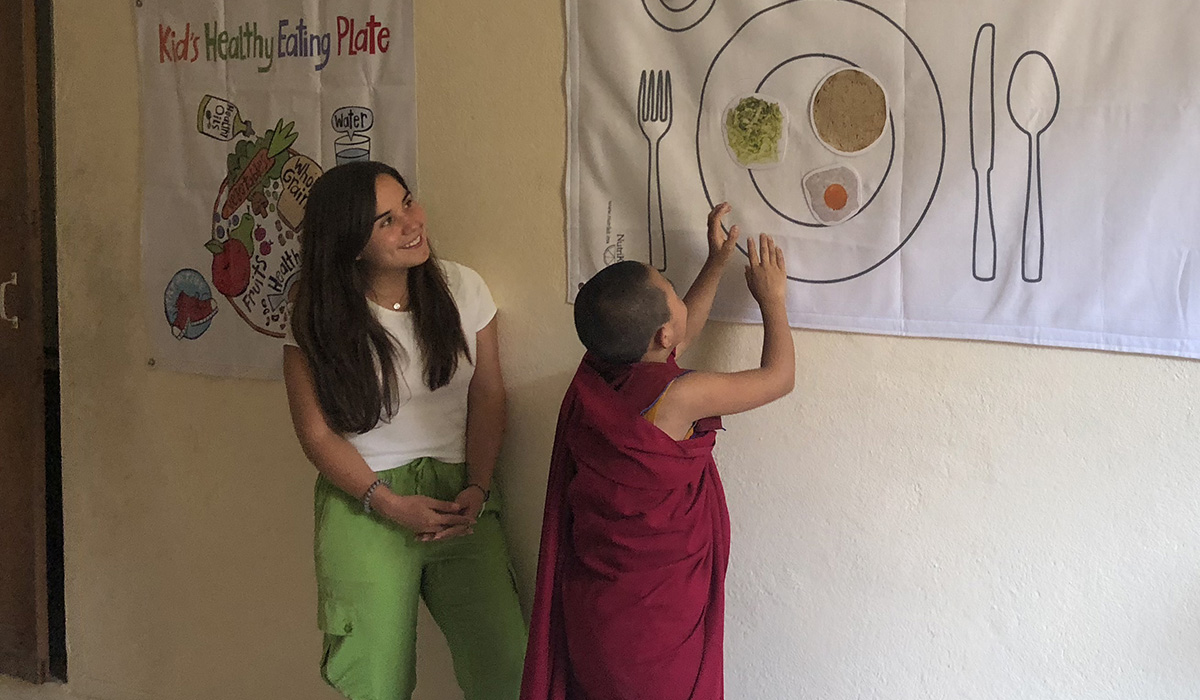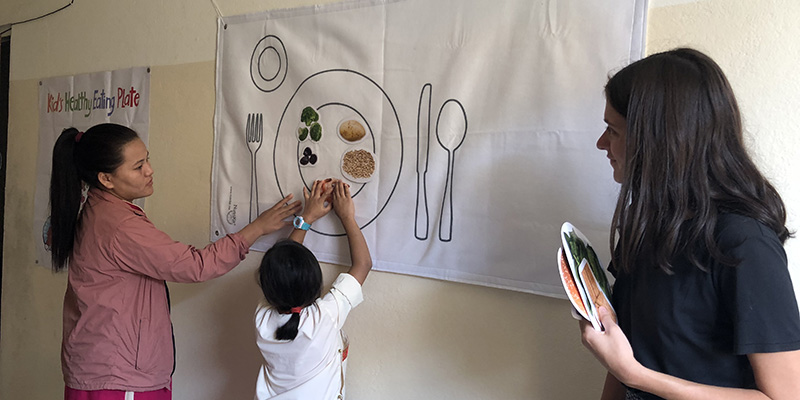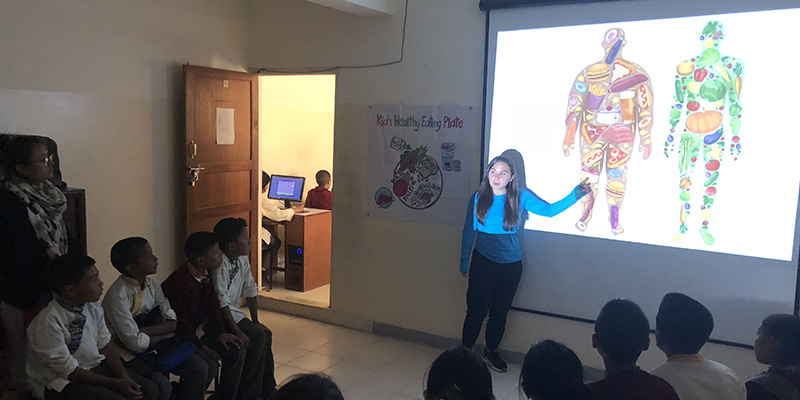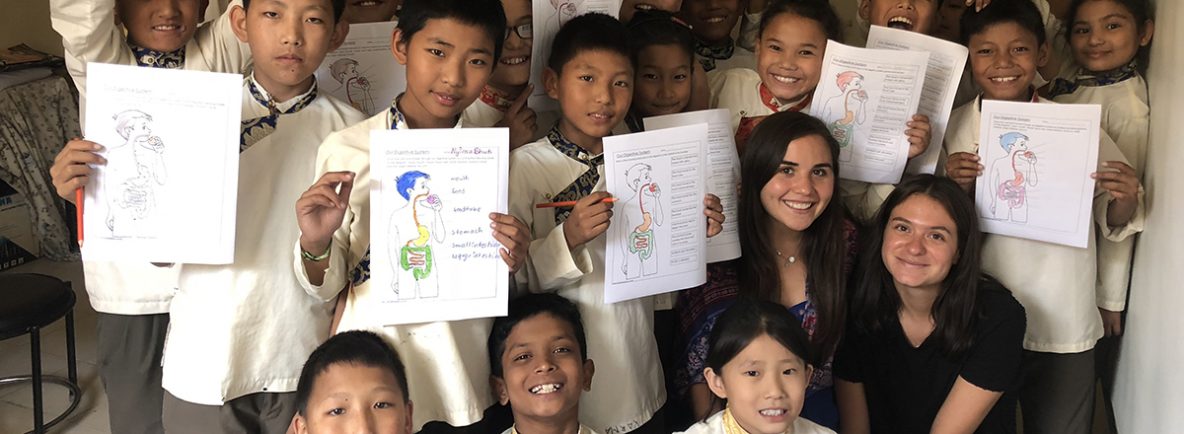Holistic nutritionists, Maria and Arantza from Mexico City, came to SMD in September to share their knowledge about nutrition and meal planning. They became part of our family the moment they landed. Following is a summary of their experience:
Last September, we had the extraordinary opportunity to teach holistic nutrition for four weeks at SMD School for Himalayan Children in Kathmandu, Nepal. We also helped the school develop a new meal plan. The key was to remain true to their local ingredients and staple foods, while maximizing the nutrient requirements for the over 500 kids at the school. Neither of us had been in Nepal before and had little to no idea of what to expect from the country and SMD. However, from the first to our last day at SMD, we were overwhelmed by the curiosity, happiness, kindness, love, respect, and openness that everyone showed us.

We quickly noticed all the challenges the school and the country as a whole have as a developing country and society when it comes to nutrition. We saw and experienced the traditional Nepalese diet, and how most of the stores and supermarkets are now filled with processed, deep fried and sugary products that are replacing the traditional staples. We had to very quickly learn all we could from SMD’s staff and children about the school, the culture, the traditions, their needs and concerns, their food buying challenges and opportunities, and their existing meal planning and cooking practices.
With the children, we noticed that they were not aware of what a healthy diet is, what a healthy plate should look like, and how to differentiate good vs bad ingredients in all the packaged food available for them to buy. We decided to teach them about how our digestive system works so they understand what happens when we eat—particularly if we eat unhealthy (e.g. processed, sugary) products. We also taught them about macro and micronutrients and why they are so important.

The last time SMD’s meal plan was modified was over ten years ago, and although it contained great recommendations, there was a lot of room for improvement. Once we assessed the existing meal plan, we discussed it with the staff and made suggestions that could address the gaps we had identified together and that could benefit the kids the most—all while keeping in mind fluctuating costs, staples, cultural favourites and any other constraints like the preference of the kids. We decided to use our classes to teach the kids all the benefits of specific foods in the hopes they would become more open to trying some varieties (white rice might be all some kids want to eat but it comes with constipation issues among other). We also had a lot of exchanges with the staff—we learned a lot from them and had to understand that some recommendations were simply not possible with the limited funds available to the school (SMD is wholly funded through sponsors from around the world).

Overall, any challenge we faced during our time at SMD, regardless of what it was, it always came with the full support from the staff and the kids. That made our experience so enjoyable and pleasant that we will be forever thankful for the opportunity—it will remain one of the best experiences of our lives. These kids have something so big about them that it is impossible not to grow and learn from them.

